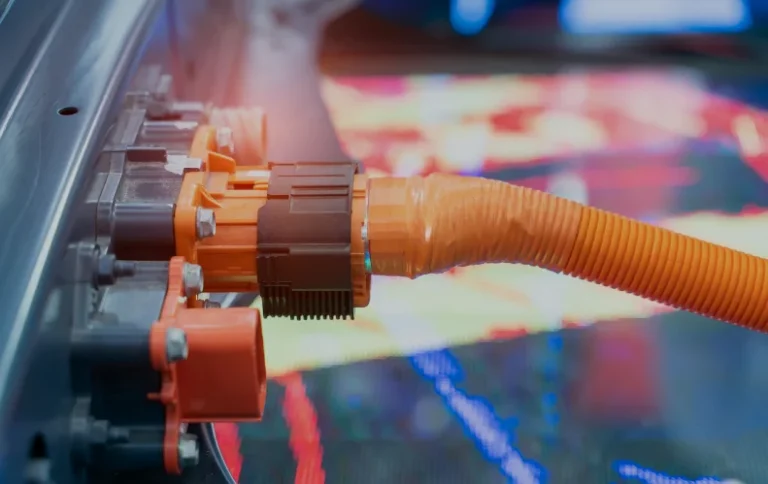In high-risk industrial environments like Singapore’s Jurong Island and Tuas refineries, choosing the right bolting method is critical to ensuring operational safety, equipment reliability, and minimal downtime. Between hydraulic torque wrenches and hydraulic bolt tensioners, the decision isn’t simply about tool preference—it’s about finding the safest, most efficient solution for the specific conditions of each job.
In this guide, we compare both tools across safety, accuracy, speed, and use cases in Singapore’s petrochemical sector—helping maintenance managers and plant engineers make informed decisions backed by field insights.

Why Bolted Joint Integrity Is Critical in Petrochemical Plants
Singapore’s petrochemical complexes are dense with pressurized piping, heat exchangers, and large-diameter flanges. In these environments, even a single improperly torqued bolt can lead to hazardous leaks or costly downtime. That’s why certified bolting tools—namely hydraulic torque wrenches and hydraulic bolt tensioners—are the gold standard for plant turnarounds and shutdowns.
Explore how Petracarbon supports maintenance across oil, gas, and energy sectors.
What’s the Difference Between a Hydraulic Torque Wrench and a Bolt Tensioner?
Hydraulic Torque Wrenches
These tools apply controlled rotational force to the nut, tightening the bolt to the required preload. They are widely used due to their adaptability in tight spaces and fast operation.
Hydraulic Bolt Tensioners
These apply a direct axial stretch to the bolt using hydraulic pressure. Once tension is achieved, the nut is run down against the joint. This method ensures a more uniform preload, especially on critical joints like heat exchanger flanges.
Hydraulic pump systems are used to power both tools, and proper pump selection is key to safe and efficient operation.
Safety & Efficiency: Tool Comparison
| Feature | Hydraulic Torque Wrench | Hydraulic Bolt Tensioner |
| Accuracy | ±3% (depends on lubrication/friction) | Use a flange spreader tool |
| Best For | Confined spaces, legacy joints | Use flange alignment tools |
| Safety Level | Moderate (requires reaction arm) | Higher (less mechanical reaction) |
| Speed | Fast for single bolts | Fast for multiple bolts (simultaneous tension) |
| Tool Clearance | Low (ideal for narrow access) | High (requires radial and axial clearance) |
| Common Use In SG | Pipelines, valves, compact systems | Heat exchangers, reactors, tank nozzles |
Real-World Application: Jurong Island & Tuas Case Insights
Case Example: Heat Exchanger Maintenance in Tuas
A major oil & gas operator switched from torque-based methods to hydraulic bolt tensioners during a scheduled shutdown. The use of multi-stud tensioning reduced total bolting time by 30% and prevented uneven preload—a common issue with friction-based methods. The operator also avoided rework and flange leak testing delays.
Case Example: FPSO Pipe Maintenance in Jurong Shipyard
For high-clearance challenges inside an FPSO vessel, a low-profile hydraulic torque wrench system with square drive was deployed. The ability to operate within confined spaces and adapt to irregular flange orientation made the torque wrench the more viable choice. The job was completed two hours ahead of schedule.
Why Certification & Tool Condition Matter
Singapore refineries often require ASME, ISO 9001, or CE-certified tools, especially for high-pressure or process-critical systems. Both hydraulic torque wrenches and hydraulic bolt tensioners must be:
- Calibrated regularly
- Paired with the right hydraulic pump
- Operated by trained personnel with certified experience
Learn more about ensuring precision and safety in heavy-duty bolting.
Don’t Forget Supporting Tools: Nut Splitters and Hydraulic Pumps
During shutdowns, nut splitters are often used to remove corroded or seized bolts without damaging flanges. Paired with a hydraulic pump, they allow clean, fast nut removal that complements both tensioning and torquing methods.
For stubborn flanges and old joints, Petracarbon also offers a full line of pipe cutting and isolation tools that integrate seamlessly with bolting workflows.
Choosing the Right Tool: Summary Decision Guide
Use Hydraulic Torque Wrenches When:
- Working in compact, limited-access areas
- Speed is critical for single-flange joints
- You’re dealing with standard-size flanges or maintenance bolt re-torqueing
Use Hydraulic Bolt Tensioners When:
- Dealing with large-diameter flanges
- Working on critical sealing applications
- Uniform preload and safety is the top priority
Petracarbon: Your Partner for Bolting Tools in Singapore
Petracarbon supplies, calibrates, and supports:
- Hydraulic torque wrenches
- Hydraulic bolt tensioners
- Hydraulic pumps
- Nut splitters
- Training and certification support
We serve Singapore’s leading petrochemical, power, and marine sectors with both sales and rental options—ensuring you always have the right tool for the job.
See how we help optimize pipeline safety with hydraulic tools.
Conclusion
Whether you choose a hydraulic torque wrench or a hydraulic bolt tensioner, the priority in any Singapore refinery or offshore operation is safety, speed, and consistency. Each tool has its place—but with proper training, certified equipment, and expert support from Petracarbon, you can ensure optimal joint integrity with minimal downtime.



